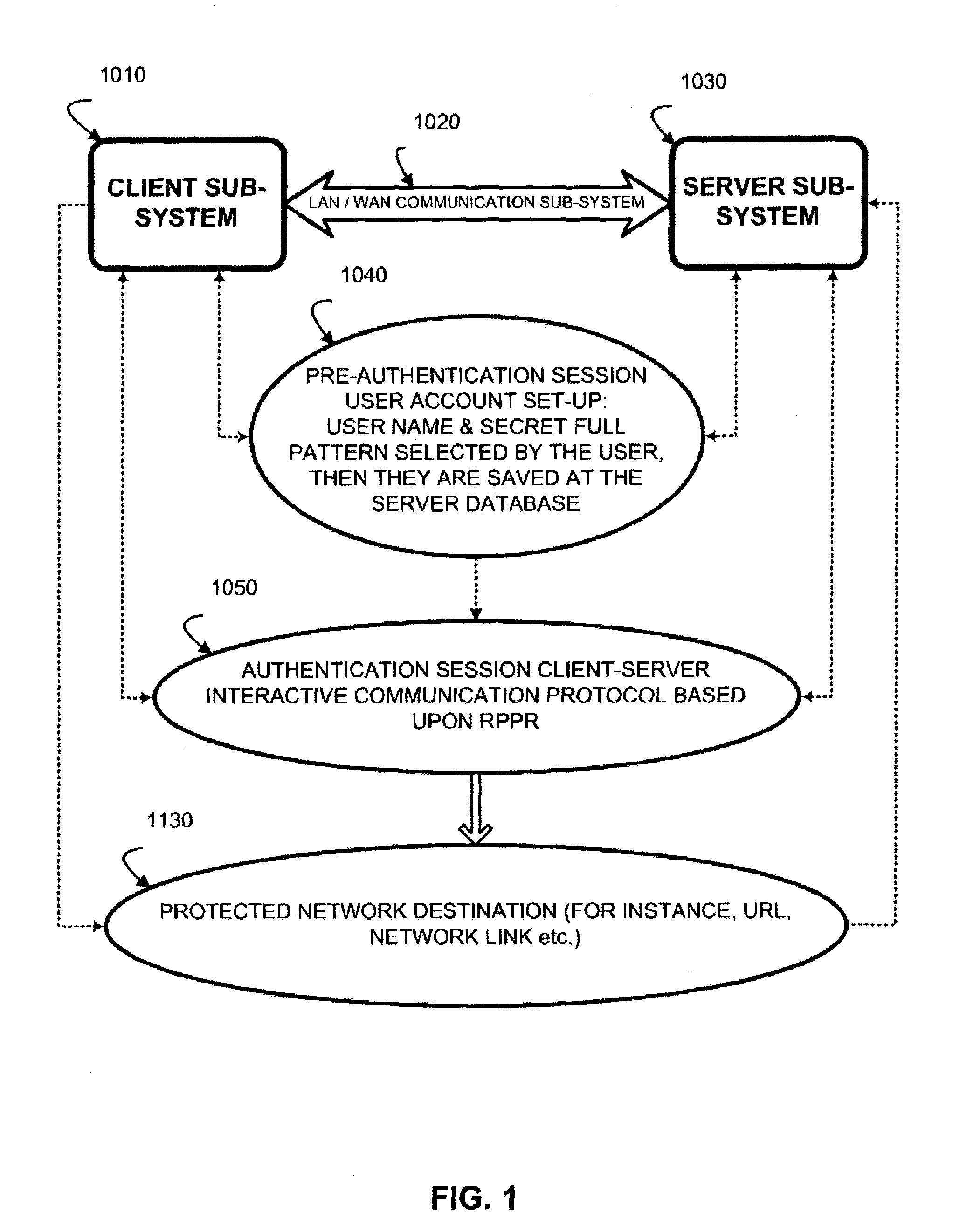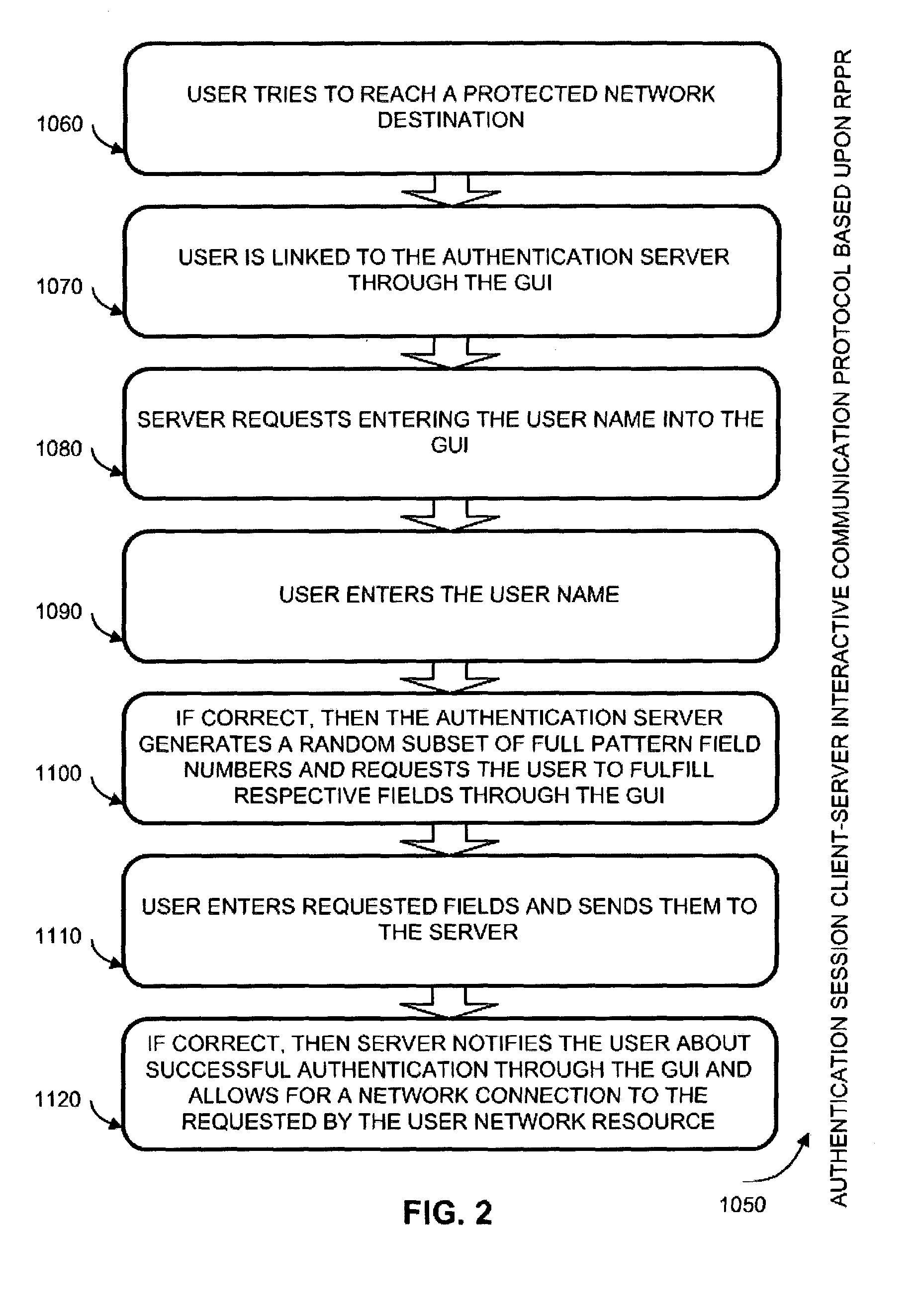System and method for user authentication interface
- Summary
- Abstract
- Description
- Claims
- Application Information
AI Technical Summary
Benefits of technology
Problems solved by technology
Method used
Image
Examples
Embodiment Construction
[0086]A detailed description of embodiments of the present invention is provided with reference to FIGS. 1 through 11A and 11B. FIG. 1 illustrates a basic communication set up for RPPR authentication processes according to the present invention. A client subsystem 1010 communicates by communication media, such as a local area network or wide area network communications subsystem 1020, with a server subsystem 1030. A protected network destination 1130 controls access to resources such as secure web sites identified by URLs, links to secure networks, and the like.
[0087]To set up access, a pre-authentication session 1040 is executed by the client subsystem 1010 and server subsystem 1030. In the pre-authentication session 1040, a user account is set up in the server subsystem 1030, the user name and a secret pattern that includes an ordered set of data fields is selected by the user and stored in the server subsystem 1030. The user account information, user name and ordered set of data ...
PUM
 Login to View More
Login to View More Abstract
Description
Claims
Application Information
 Login to View More
Login to View More - R&D
- Intellectual Property
- Life Sciences
- Materials
- Tech Scout
- Unparalleled Data Quality
- Higher Quality Content
- 60% Fewer Hallucinations
Browse by: Latest US Patents, China's latest patents, Technical Efficacy Thesaurus, Application Domain, Technology Topic, Popular Technical Reports.
© 2025 PatSnap. All rights reserved.Legal|Privacy policy|Modern Slavery Act Transparency Statement|Sitemap|About US| Contact US: help@patsnap.com



